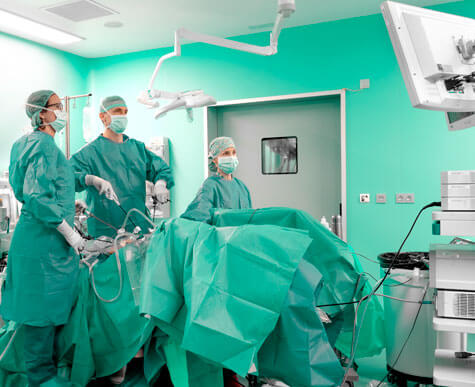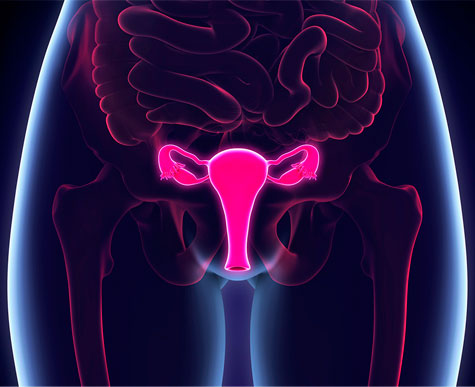About Cervical Conization and LEEP Procedures

What is cervical conization?
Cervical conization is a surgical procedure by which a conical section of the cervix is removed for diagnostic and/or therapeutic purposes. Cervical conization is a minimally invasive surgical procedure.
There are different techniques to carry out the surgical intervention according to the characteristics of the cervical lesions, their location, and the means available to carry them out.
It is a relatively simple procedure that can be performed under local or general anesthesia, using different surgical materials such as the gynecological retractor (speculum) with conization loops.
Not necessarily the entire cervix is removed, but it tends to be preserved, especially in those women who have not yet had children.
Techniques for Conization of the cervix
The different ways to perform cervical conization (cervical conization or conization of the cervix) include:
Conization with LEEP (Loop Electro-Surgical Excision Procedure)
It is done by a handle that uses energy that cuts and coagulates the tissues at the same time. It is the most used technique and is used for the extraction of very superficial and/or small lesions. It serves both to perform larger biopsies than with the usual biopsy technique, or as a treatment to extract the entire cervical lesion.
Conization with Cold Scalpel
It is performed when there are larger lesions located, mainly, within the endocervical canal. Usually, they are more aggressive lesions of the cervix since it tends to remove a greater amount of tissue. This type of technique, used in very selected cases, has a higher risk of genital bleeding after the procedure.


Laser conization
It is a new and innovative technique that uses a carbon dioxide laser beam to cut and coagulate cervical tissue. This technique developed by the gynecologist allows deep conizations, directing the cut with greater precision so as not to remove healthy tissue unnecessarily. It is an expensive technology and not all hospitals have it.
When is the conization of the cervix performed?
Patients with the following pathologies will need cervical conization:
- High-grade pre-malignant lesion
- Persistent low-grade premalignant lesion for at least two years
- Macroscopic suspicion of cervical cancer in early stages (IA1-IA2)
- Show signs of precancerous pathology in the cervix.
What adverse effects can I have with the conization of the cervix?
Complications and consequences of a cervical conization
Most of the time that conization is performed, it does not usually have problems or complications for the patient who has undergone the treatment. The effects that conization can have can be:
Postoperative bleeding: Although it can occur with any of the aforementioned techniques, it is more frequent when the cold scalpel is used. With any of the techniques, post-operative bleeding can occur that usually does not last more than 10-15 days and should gradually decrease.
Smelly vaginal discharge: It is common to have foul-smelling discharge due to scarring of the cervix. For this reason, vaginal ovules are prescribed to be placed during the 7 days after conization of the cervix.
Immediately after the procedure, menstrual-type pain may be experienced that usually subsides with the passing of hours and with the taking of common analgesics. There are cases in which in the days before menstruation there may be a scant dripping of blood.
Period pains: can occur immediately after the procedure and usually subsides within hours after taking common oral painkillers.
You cannot have sexual intercourse during the first month after conization, nor use tampons or suppositories, unless your gynecologist indicates it. It is preferable not to douche or immerse baths until one month after conization.
Specialist in Cervical Conization in Spain.
Recommendations to avoid the risk of new lesions after a cervical conization
To avoid second injuries once the treatment has been carried out, Doctor Lucas Minig, a specialist Gynecologist Oncologist recommends the following points to take into account:
- Use of condoms
- Contraceptive pills
- Quit smoking if you are a smoker, tobacco consumption interferes with the defenses against HPV
Consult with your specialist doctor or make an appointment online with us to assist you with any questions you may have related to Cervical Conization.
Where do we treat Cervical Conization?
Mainly in Valencia in person, if you live outside of Spain, you can make an online consultation to resolve any type of doubt, and prepare a prior diagnosis for treatment with the patient. Our team has a high surgical specialization at the national level in Spanish territory and internationally with visits from patients from all over the world.
Terms related to Cervical Conization frequently searched by our patients in Spain:
Cervical conization, second cervical conization, cervical conization treatment, conization surgery in Spain, recovery, conization in pregnancy, price of a cervical conization, specialists in Cervical Conization, Lucas Minig Cervical Conization.
Previous Appointment → Surgical procedure for Cervical Conization in Spain
Request more information about the treatment from our specialists in Spain.
Send us any questions about «Cervical Conization and its Treatment». We will reply as soon as possible.
Request a Second Medical Opinion
Frequently Asked Questions About Cervical Conization
How long should I wait to get pregnant?
After conization, it is preferable to wait for the result of the pathological anatomy and wait for the first post-conization control to define that there is no need to re-operate.
If everything turns out as expected, you can start looking for pregnancy after 3 months after cervical conization.
Can I have a normal vaginal delivery if I had a conization?
Yes. It is not a contraindication to have a delivery the fact of having undergone a conization of the cervix.
When should I perform the first review after cervical conization?
Usually, a first clinical control is performed 10-15 days after the procedure. Then, if the healing has been satisfactory, controls are carried out every 3-6 months during the first years to rule out a recurrence of the disease in the cervix.
These controls are carried out by performing colposcopies, cervical cytology, and/or HPV virus typing.
Can I have problems with a pregnancy?
Patients who undergo conization have a slightly increased risk of preterm delivery or premature rupture of membranes.
In any case, it is necessary for the gynecologist who manages the pregnancy to know. The objective is to carry out adequate controls of the measurement of cervical length (cervicometry) during pregnancy to assess the risk of preterm delivery. In the vast majority of cases, problems with pregnancies are not recorded.
Patient Testimonials Cervical Conization
Doctor Lucas Minig Specialist in Cervical Conization in Valencia, Spain
WE WORK FOR YOUR HEALTH

SPECIALIZED TREATMENTS

CONTROL AND DIAGNOSIS

MAXIMUM TECHNOLOGY

Contact the Cervical Conization Specialist
Leave us your data and consultation to offer you personalized medical advice
International Consultation
If you want remote medical care, you can consult
through the following links:
International Appointment
Online Consultation
Whatsapp: + 34 679 112 179






